
The Vibrant Heart of Incheon: Chinatown
Discover the vibrant blend of Korean and Chinese cultures in Incheon's Chinatown, where history, art, and cuisine come together in a colorful and bustling neighborhood.
Chinatown in Incheon is a colorful and bustling neighborhood that offers a unique blend of Korean and Chinese cultures. Established in 1884, this area has grown to become a cultural hotspot, attracting tourists from all over the world. As you wander through the streets, you'll be greeted by traditional Chinese gatehouses, ornate temples, and vibrant murals that tell the story of the community's rich history. One of the main attractions is Jayu Park, which offers stunning views of Incheon Port and the surrounding area. The park is a perfect spot for a leisurely stroll or a picnic, providing a serene escape from the busy streets below. Another must-visit is the Incheon Art Platform, where you can explore contemporary art exhibitions and performances that showcase the talents of local artists. Food lovers will be in paradise, as Chinatown is home to an array of restaurants serving authentic Chinese cuisine. From mouth-watering dumplings to flavorful noodle dishes, there's something to satisfy every palate. Don't miss the opportunity to try the famous Jjajangmyeon, a Korean-Chinese black bean noodle dish that has become a local favorite. For dessert, head to one of the many street vendors offering sweet treats like Dragon's Beard Candy. Shopping enthusiasts will also find plenty to enjoy, with numerous shops selling traditional Chinese goods, souvenirs, and unique handicrafts. Whether you're looking for intricate jade jewelry or beautiful silk garments, you're sure to find a special keepsake to remember your visit by.
Local tips in Chinatown
- Visit Jayu Park for panoramic views of Incheon Port and a peaceful retreat.
- Try the local favorite, Jjajangmyeon, at one of the authentic Chinese restaurants.
- Explore the Incheon Art Platform for a taste of contemporary local art.
- Shop for unique souvenirs and traditional Chinese goods at the local shops.
- Don't miss the street vendors offering traditional Chinese sweets like Dragon's Beard Candy.
The Vibrant Heart of Incheon: Chinatown
Chinatown in Incheon is a colorful and bustling neighborhood that offers a unique blend of Korean and Chinese cultures. Established in 1884, this area has grown to become a cultural hotspot, attracting tourists from all over the world. As you wander through the streets, you'll be greeted by traditional Chinese gatehouses, ornate temples, and vibrant murals that tell the story of the community's rich history. One of the main attractions is Jayu Park, which offers stunning views of Incheon Port and the surrounding area. The park is a perfect spot for a leisurely stroll or a picnic, providing a serene escape from the busy streets below. Another must-visit is the Incheon Art Platform, where you can explore contemporary art exhibitions and performances that showcase the talents of local artists. Food lovers will be in paradise, as Chinatown is home to an array of restaurants serving authentic Chinese cuisine. From mouth-watering dumplings to flavorful noodle dishes, there's something to satisfy every palate. Don't miss the opportunity to try the famous Jjajangmyeon, a Korean-Chinese black bean noodle dish that has become a local favorite. For dessert, head to one of the many street vendors offering sweet treats like Dragon's Beard Candy. Shopping enthusiasts will also find plenty to enjoy, with numerous shops selling traditional Chinese goods, souvenirs, and unique handicrafts. Whether you're looking for intricate jade jewelry or beautiful silk garments, you're sure to find a special keepsake to remember your visit by.
Iconic landmarks you can’t miss
Incheon Chinatown
Explore the vibrant streets of Incheon Chinatown, where rich cultural heritage meets delicious cuisine and stunning architecture.
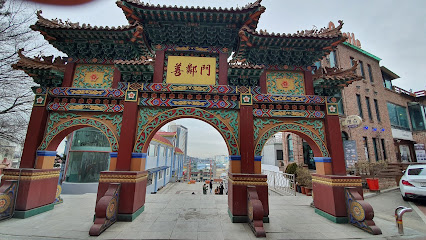
Songwol-dong Fairy Tale Village
Discover the enchanting world of Songwol-dong Fairy Tale Village in Incheon, where whimsical art and fairy tale charm come to life.
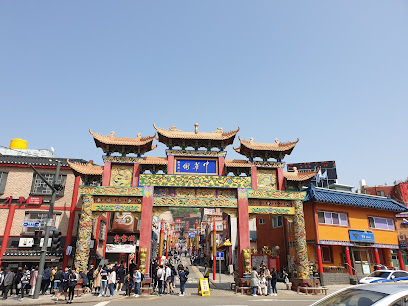
G-Tower
Explore G-Tower, Incheon's architectural marvel, offering stunning views, cultural exhibitions, and a vibrant artistic community.

Freedom Park
Explore Freedom Park in Incheon, a serene park blending nature with history, ideal for relaxation and cultural discovery.

Memorial Hall for Incheon Landing Operation
Explore the Memorial Hall for Incheon Landing Operation, a poignant tribute to Korea's military history, featuring engaging exhibits and stunning city views.
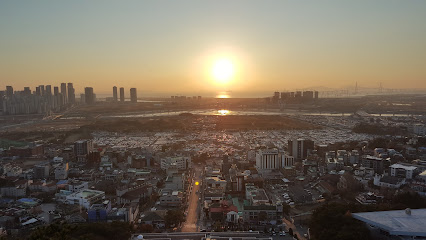
Jjajangmyeon Museum
Discover the rich history and flavors of Jjajangmyeon at Incheon's unique culinary museum, a must-visit for food lovers and cultural explorers.

HongYe-mun
Explore the historical marvel of HongYe-mun in Incheon, a captivating landmark blending rich heritage with stunning architecture and local culture.

차이나타운 삼국지벽화거리
Explore Incheon's Chinatown Museum and uncover the rich cultural heritage of Chinese immigrants in Korea.

Uiseondang
Explore Uiseondang, a serene Buddhist temple in Incheon, where tranquility meets cultural heritage amidst beautiful gardens and traditional architecture.

china town
Explore Incheon's Chinatown, a historical landmark blending Korean and Chinese cultures with vibrant streets, delicious food, and rich heritage.

Unmissable attractions to see
Wolmi Theme Park
Experience the thrill of Wolmi Theme Park in Incheon, a vibrant amusement park filled with exciting rides, entertainment, and delicious food options.

Songdo Central Park
Explore the beauty of Songdo Central Park in Incheon, a stunning blend of nature, modern design, and vibrant community life.

G-Tower
Experience the artistic heart of Incheon at G-Tower—where culture, creativity, and breathtaking views converge.

Jjajangmyeon Museum
Discover the history and flavors of Jjajangmyeon at the Jjajangmyeon Museum in Incheon’s vibrant Chinatown, a must-visit for culinary explorers.

Hwadojin Park
Discover the tranquility of Hwadojin Park, a lush green retreat in Incheon, perfect for nature walks, family picnics, and serene moments in nature.

Incheon Open Port Museum
Explore Incheon's maritime heritage at the Open Port Museum, a historical gem showcasing the city's transformation into a bustling trade hub.

Essential places to dine
Mandabog
Discover the essence of Chinese flavors at Mandabog in Incheon’s vibrant Chinatown – a culinary journey awaits every visitor.

Sinseung Banjeom
Discover the rich flavors of authentic Chinese cuisine at Sinseung Banjeom in Incheon’s vibrant Chinatown.

Gonghwachun
Discover authentic Chinese flavors at Gonghwachun in Incheon's vibrant Chinatown - where tradition meets taste.

연경 차이나타운본점
Experience authentic Chinese cuisine in Incheon’s vibrant Chinatown at Yanjing Restaurant, where tradition meets flavor.

Taehwawon
Discover authentic Chinese cuisine at Taehwawon in Incheon’s vibrant Chinatown – where every dish tells a story.

Sin
Discover the rich flavors of China at Sin in Incheon - where every dish tells a story.

Mimijin
Discover the essence of Chinese cuisine in Incheon's vibrant Chinatown at Mimijin - where every dish tells a story.

중국성
Experience authentic Chinese cuisine at 중화성 in Incheon - where tradition meets flavor.

Siblihyang
Experience authentic non-filled breads at Siblihyang in Incheon Chinatown – where culinary tradition meets vibrant culture.

Cheong-Gwan
Experience authentic Chinese cuisine at Cheong-Gwan in Incheon’s vibrant Chinatown, where flavors meet tradition.

Markets, malls and hidden boutiques
Incheon Chinatown
Experience the rich culture and delicious cuisine of Incheon Chinatown, the first and most vibrant Chinatown in Korea, perfect for food and culture enthusiasts.

Hyundai Premium Outlets Songdo
Discover unbeatable shopping and dining at Hyundai Premium Outlets Songdo, a premier outlet mall in Incheon, South Korea.

SQUARE1
Explore SQUARE1 in Incheon, a dynamic shopping mall offering diverse shops, delicious dining, and entertaining experiences for all ages.
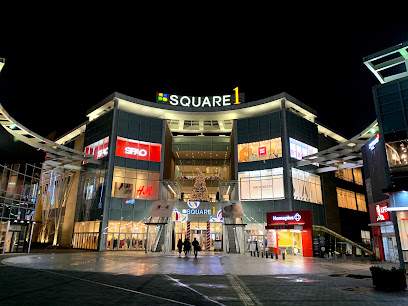
Allyway Incheon
Experience the best of shopping and dining at Allyway Incheon, a vibrant shopping mall in Michuhol-gu, Incheon, where culture meets modernity.

Incheon Airport Duty Free Store
Discover luxury shopping at Incheon Airport Duty Free Store, offering top brands and unique local products at unbeatable prices.

Underground Shopping
Discover an underground shopping haven in Bupyeong-gu, Incheon, where local boutiques and delicious eateries await your exploration.

Incheon International Airport Terminal 2 Korean Traditional Culture Experience Center (West)
Experience the essence of Korean culture at Incheon International Airport's Traditional Culture Experience Center, a unique stop for travelers.

Gentle Monster Shilla Incheon Airport Duty Free Store
Discover cutting-edge eyewear and accessories at Gentle Monster Shilla Incheon Airport Duty Free Store, where fashion meets functionality.

CHARLES & KEITH (SQUARE ONE)
Explore trendsetting fashion accessories at CHARLES & KEITH in Square One, Incheon, where style meets affordability for every shopper.

I'M DAVID(뉴코아아울렛 인천점)
Discover the elegance of traditional Korean attire at I'M DAVID, Incheon's premier costume store offering authentic hanboks and accessories.

Essential bars & hidden hideouts
Oakwood Premier, Incheon
Discover the elegance of Oakwood Premier Incheon, where luxury accommodation meets vibrant nightlife and dining experiences.

Mandabog
Discover the authentic flavors of China at Mandabog, a beloved restaurant in Incheon’s vibrant Chinatown, perfect for a memorable dining experience.
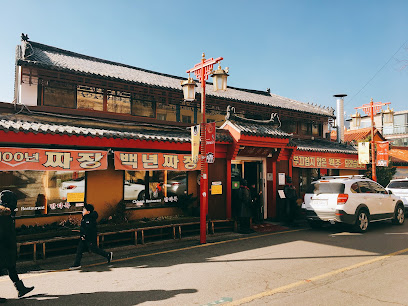
Gonghwachun
Experience the rich flavors of authentic Chinese cuisine at Gonghwachun in Incheon’s vibrant Chinatown.

Southside Parlor
Discover the lively ambiance of Southside Parlor, a premier cocktail bar in Yongsan-gu, Seoul offering exquisite drinks and American cuisine.

찰스 H Charles H.
Discover the elegance of Charles H. in Seoul, a premier bar offering exquisite drinks and gourmet bites in a sophisticated atmosphere.

The Cinder Bar
Experience the vibrant nightlife at The Cinder Bar in Yeonsu-gu, where locals and travelers come together for a memorable evening of drinks and entertainment.

Bar Cham
Discover Bar Cham, the enchanting cocktail bar in Jongno District, Seoul, renowned for its creative drinks and cozy atmosphere.

The Jet Lagged Lizard
Discover The Jet Lagged Lizard, a lively bar and pizza restaurant in Incheon, offering delicious food and drinks in a vibrant atmosphere.

Beton Brut : Concrete Bar
Discover Beton Brut, a lively cocktail bar and live music venue in Seoul, where nightlife meets art in a vibrant atmosphere.

The Cinder Bar (Incheon Airport)
Discover The Cinder Bar at Incheon Airport – a cozy pub oasis with craft beers and a warm atmosphere for travelers.
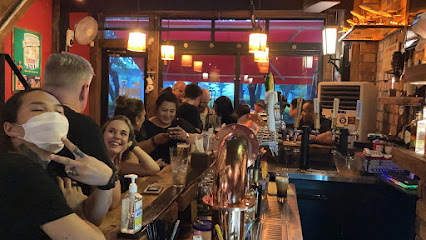
Local Phrases
-
- Hello안녕하세요
[annyeonghaseyo] - Goodbye안녕히 가세요
[annyeonghi gaseyo] - Yes네
[ne] - No아니요
[aniyo] - Please/You're welcome부탁합니다/천만에요
[butakhamnida/cheonmaneyo] - Thank you감사합니다
[gamsahamnida] - Excuse me/Sorry죄송합니다
[joesonghamnida] - How are you?어떻게 지내세요?
[eotteoke jinaeseyo?] - Fine. And you?괜찮아요. 당신은요?
[gwaenchanayo. dangsineunyo?] - Do you speak English?영어 할 수 있어요?
[yeongeo hal su isseoyo?] - I don't understand이해하지 못해요
[ihaehaji mothaeyo]
- Hello안녕하세요
-
- I'd like to see the menu, please메뉴를 보고 싶어요
[menyureul bogo sipeoyo] - I don't eat meat고기를 먹지 않아요
[gogireul meokji anayo] - Cheers!건배!
[geonbae!] - I would like to pay, please계산할게요
[gyesanhalkkeyo]
- I'd like to see the menu, please메뉴를 보고 싶어요
-
- Help!도와주세요!
[dowajuseyo!] - Go away!가세요!
[gaseyo!] - Call the Police!경찰을 불러주세요!
[gyeongchareul bulleojuseyo!] - Call a doctor!의사를 불러주세요!
[uisareul bulleojuseyo!] - I'm lost길을 잃었어요
[gireul ilheosseoyo] - I'm ill아파요
[apayo]
- Help!도와주세요!
-
- I'd like to buy...사고 싶어요...
[sago sipeoyo...] - I'm just looking둘러보고 있어요
[dulleobogo isseoyo] - How much is it?얼마에요?
[eolmaeyo?] - That's too expensive너무 비싸요
[neomu bissayo] - Can you lower the price?가격을 낮출 수 있어요?
[gageogeul najchul su isseoyo?]
- I'd like to buy...사고 싶어요...
-
- What time is it?지금 몇 시에요?
[jigeum myeot sieyo?] - It's one o'clock한 시에요
[han sieyo] - Half past (10)10시 반
[sip si ban] - Morning아침
[achim] - Afternoon오후
[ohu] - Evening저녁
[jeonyeok] - Yesterday어제
[eoje] - Today오늘
[oneul] - Tomorrow내일
[naeil] - 1일
[il] - 2이
[i] - 3삼
[sam] - 4사
[sa] - 5오
[o] - 6육
[yuk] - 7칠
[chil] - 8팔
[pal] - 9구
[gu] - 10십
[sip]
- What time is it?지금 몇 시에요?
-
- Where's a/the...?어디에 ...이/가 있어요?
[eodie ...i/ga isseoyo?] - What's the address?주소가 무엇이에요?
[jusoga mueosieyo?] - Can you show me (on the map)?지도로 보여 줄 수 있어요?
[jidoro boyeo jul su isseoyo?] - When's the next (bus)?다음 (버스) 언제와요?
[daeum (beoseu) eonjewayo?] - A ticket (to ....)표 하나 (....로)
[pyo hana (....ro)]
- Where's a/the...?어디에 ...이/가 있어요?
History of Chinatown
-
Chinatown in Incheon has its origins in the late 19th century, during the Joseon Dynasty. The first Chinese immigrants arrived in Incheon, then known as Chemulpo, following the opening of the port in 1883. These immigrants primarily came from the Shandong province and were drawn by the opportunities for trade and commerce in this new, bustling port city.
-
In 1884, the Chinese community was officially recognized, and the area that is now Chinatown began to take shape. The establishment of the Chinese consulate and the construction of Chinese-style buildings helped solidify the neighborhood's identity. The community thrived, establishing businesses, schools, and cultural institutions, making it a vital hub for Chinese culture in Korea.
-
Throughout the early 20th century, Chinatown became a melting pot of cultures, where Koreans and Chinese interacted in trade and daily life. The influence of Chinese culture can be seen in local cuisine, festivals, and architecture. The famous Jajangmyeon, a noodle dish with black bean sauce, has roots in this neighborhood and has become a staple in Korean cuisine.
-
During the Japanese occupation of Korea (1910-1945), the Chinese community faced significant challenges. Many Chinese businesses were targeted, and the population decreased due to emigration. Despite these challenges, the community persisted, maintaining its cultural identity and continuing to celebrate traditional festivals such as the Lunar New Year.
-
In recent decades, Chinatown in Incheon has undergone revitalization efforts aimed at preserving its cultural heritage while promoting tourism. The area is now filled with vibrant shops, restaurants, and cultural festivals that celebrate its rich history. The Incheon China Town Festival, held annually, showcases traditional Chinese performances, food, and art, drawing visitors from across the region.
Chinatown Essentials
-
Chinatown in Incheon is easily accessible via public transportation. From Incheon International Airport, you can take the Airport Railroad Express (AREX) to Incheon Station, which takes about 30 minutes. From Incheon Station, transfer to Line 1 of the Incheon Subway and head to Chinatown Station. Alternatively, taxis are available from the airport, providing a direct route that takes approximately 45 minutes depending on traffic.
-
Chinatown is a compact area, making it easy to explore on foot. The Incheon Subway Line 1 has a station named Chinatown Station, which serves as a convenient entry point. Local buses also operate within the area, and bike rentals are available for those looking to explore at a leisurely pace. Be mindful to check the bus schedules, as they can vary throughout the day.
-
Chinatown in Incheon is generally safe for tourists, but standard precautions should be taken. Avoid poorly lit areas at night and keep your belongings secure. Areas around the main market can be crowded, so stay vigilant against petty theft. While there are no specific high-crime zones targeting tourists, it’s wise to avoid isolated streets after dark.
-
In case of an emergency, dial 112 for police assistance or 119 for fire and medical emergencies. Hospitals and clinics are available in the area, with a few pharmacies for minor health issues. It is advisable to have travel insurance that covers medical emergencies. Keep a list of local emergency contacts handy.
-
Fashion: Do wear comfortable shoes for walking; don't wear overly casual or revealing clothing, especially when visiting religious sites. Religion: Do show respect at temples and cultural sites; don't take photos where prohibited. Public Transport: Do be polite and offer your seat to elderly passengers; don't eat or drink on public transport. Greetings: Do greet locals with a smile and a nod; don't be overly loud or intrusive. Eating & Drinking: Do try local dishes like jjajangmyeon (black bean noodles); don't waste food or refuse offers of food, as it's considered impolite.
-
To experience Chinatown like a local, visit the bustling markets early in the day for the freshest produce and snacks. Engage with vendors, many of whom are eager to share their stories. Try dining at local eateries where you can savor authentic Chinese-Korean fusion cuisine. Don't miss the traditional tea houses for a relaxing experience away from the busy streets, and consider participating in local festivals if your visit coincides with one.
Nearby Cities to Chinatown
-
Things To Do in Seoul
-
Things To Do in Suwon
-
Things To Do in Chuncheon
-
Things To Do in Daejeon
-
Things To Do in Jeonju
-
Things To Do in Andong
-
Things To Do in Daegu
-
Things To Do in Gwangju
-
Things To Do in Suncheon
-
Things To Do in Pohang
-
Things To Do in Mokpo
-
Things To Do in Gyeongju
-
Things To Do in Ulsan
-
Things To Do in Busan
-
Things To Do in Jeju City









